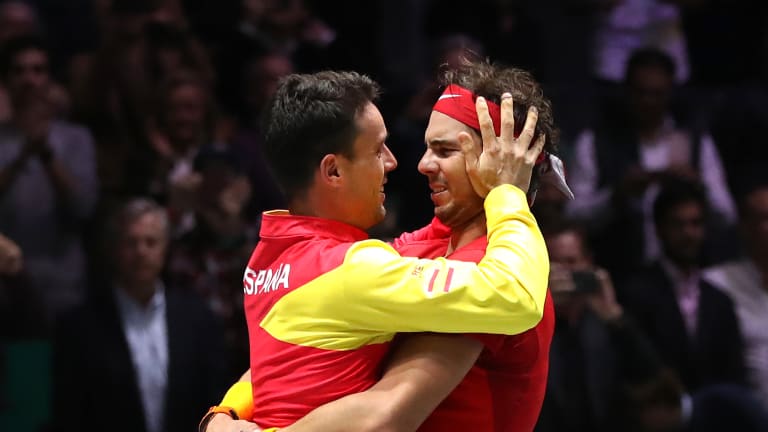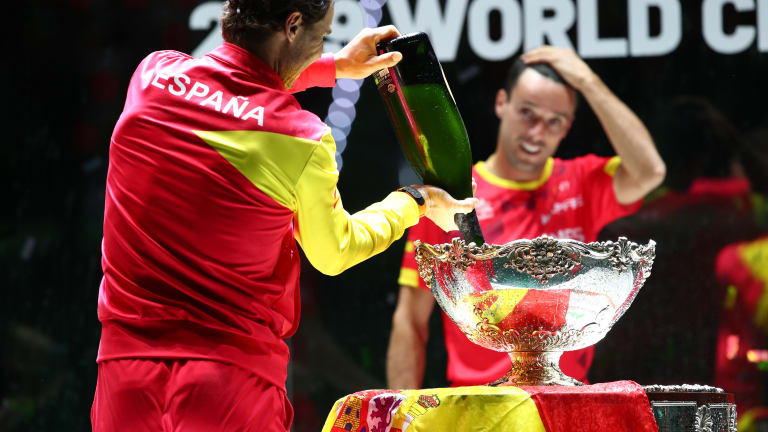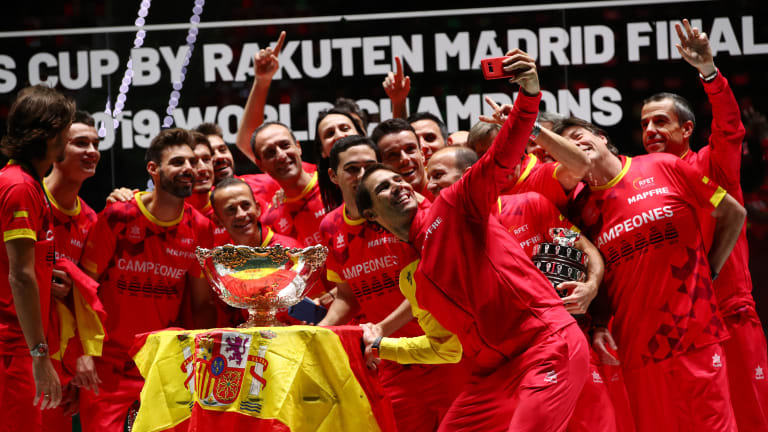A new Davis Cup format brings out a new Rafael Nadal in Madrid
By Nov 25, 2019ATP Barcelona, Spain
Carlos Alcaraz’s loss shows the Monte Carlo-Barcelona double isn’t as easy as Rafael Nadal made it look
By Apr 20, 2025Roland Garros
Rafael Nadal to be honored with 'exceptional' tribute on opening day of Roland Garros
By Apr 17, 2025Lifestyle
Rafael Nadal’s shirt from his career Grand Slam-completing victory in 2010 is available for auction
By Apr 10, 2025Social
Watch Rafael Nadal stress out over Real Madrid, then celebrate a dramatic victory
By Apr 02, 2025Social
Rafael Nadal congratulates academy students Eala, Wong on big Miami wins
By Mar 22, 2025Social
"Hola TikTok!" Rafael Nadal racks up 3 million views
By Mar 15, 2025Social
Toni Nadal calls out ‘not-so-clean players’ for taking shots at Jannik Sinner
By Feb 27, 2025Tennis.com Interview
Rodrigo Pacheco Mendez: inspired by Nadal, dreams of facing Sinner, Mexico's tennis answer?
By Feb 26, 2025The Business of Tennis
Rafael Nadal set for $94-million profit after selling part of his stake in tennis academy
By Feb 11, 2025A new Davis Cup format brings out a new Rafael Nadal in Madrid
The Spaniard served big, attacked the net, won in singles and doubles, and led Spain to its first Cup in eight years.
Published Nov 25, 2019
Advertising

A new Davis Cup format brings out a new Rafael Nadal in Madrid
© Getty Images
Advertising

A new Davis Cup format brings out a new Rafael Nadal in Madrid
© Getty Images
Advertising

A new Davis Cup format brings out a new Rafael Nadal in Madrid
© Getty Images